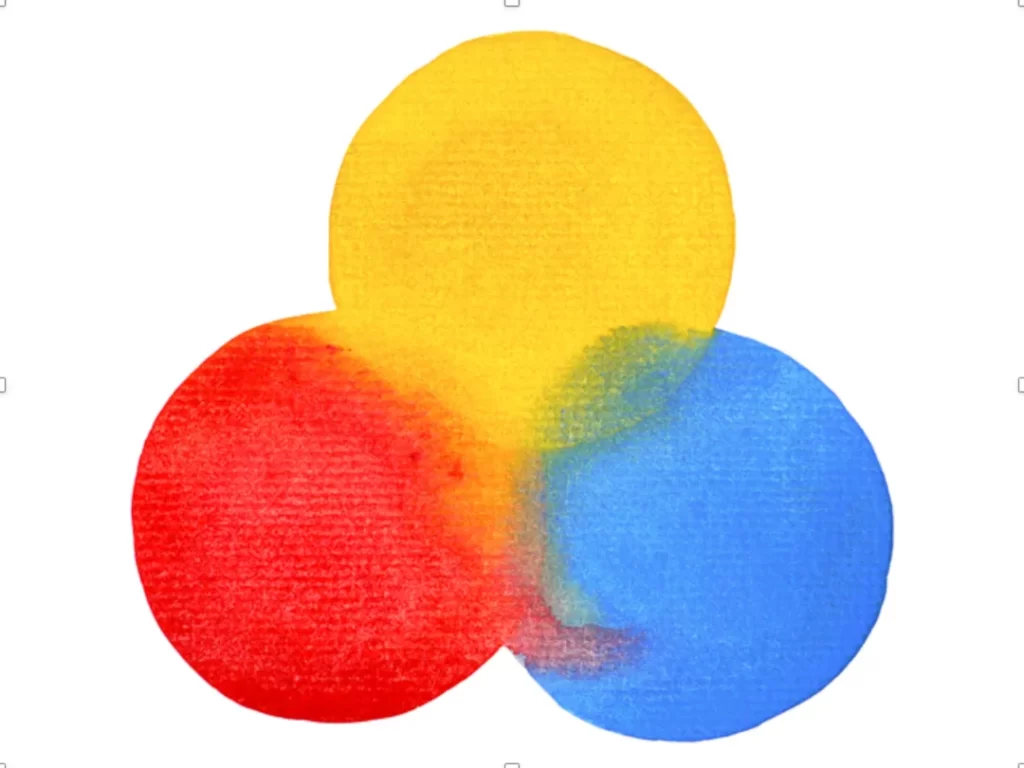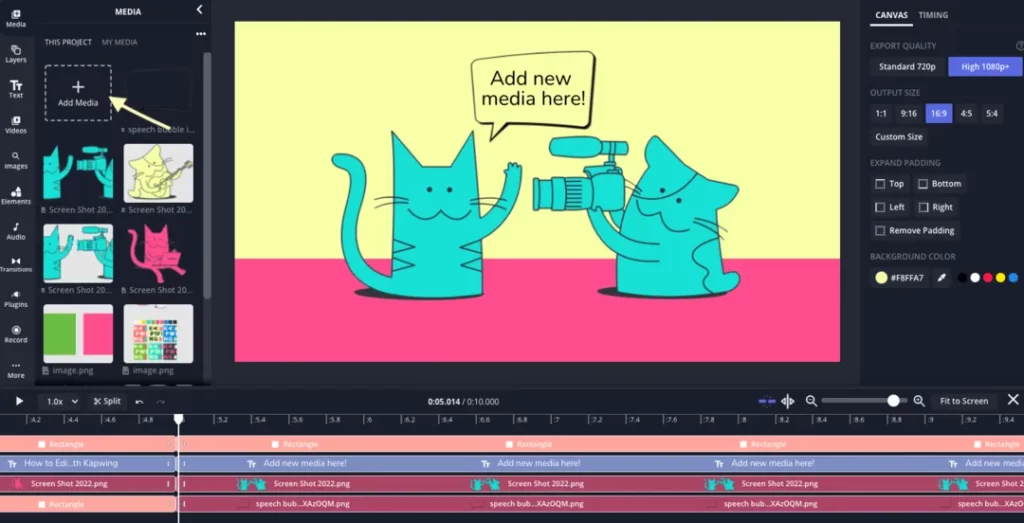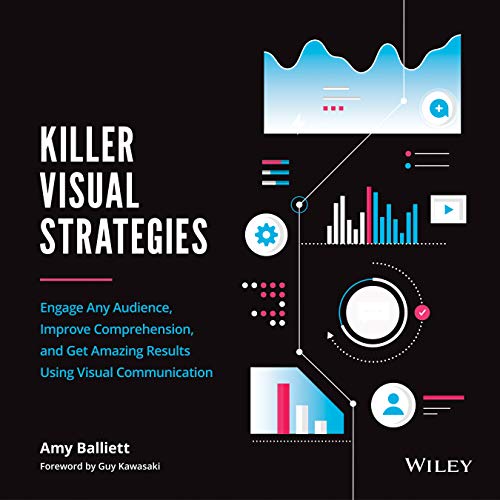How to Create Eye-Catching Visual Elements That Drive Results
Visuals are a powerful way to engage your audience, spread your message, and get results that will take your business to the next level.
This article will discuss why visual elements are so crucial in today's online world and how they may assist companies in achieving their objectives. We'll also give you practical tips on creating strategic visuals to drive results.
Whether you're starting with visual marketing or looking to improve what you already have, there's something for everyone! Read on to find out more.
Table of Contents
Determine the Purpose of your Visual Elements
To create a successful marketing strategy, you must first define your visuals' purpose. Should they inform the audience about the brand or showcase a new product?
They are meant to evoke emotions and create a connection with customers. Whatever the goal, it must be in line with the marketing strategy. A coherent and focused plan is the key to reaching the desired audience and success.
Without a clear goal for visual elements, they can become scattered and confusing, hurting the campaign's effectiveness.
Decide on the Best Type of Visual to Use

Each type of visualisation has its unique benefits.
Charts can simplify complex concepts and help viewers better understand the relationships between them. Infographics are great for presenting facts and statistics clearly and engagingly. Video can provide a more immersive experience and engage viewers on many levels.
The best type of visual depends on the content you want to convey and the audience you're trying to reach.
Understand Basic Design Principles
Design principles are an integral part of any successful design. They are the fundamental rules and guidelines that ensure a strategy is aesthetically pleasing but also functional and practical.
These principles include contrast, balance, unity, proportion, hierarchy, and space. By following these principles, designers can create designs that are visually appealing, easy to navigate, and achieve their goals.
- Used Book in Good Condition
- Lidwell, William (Author)
- English (Publication Language)
- 272 Pages – 01/01/2010 (Publication Date) – Rockport Publishers (Publisher)
Without principles to guide the design process, design can become cluttered, confusing, and not meet the target audience's needs. Therefore, understanding and applying design principles is crucial to creating a practical layout that genuinely resonates with the target audience.
- Balance. Balance is the equilibrium between visual elements in a work of art. A good balance implies that none of the visual aspects dominates the others, and each object has its weight, creating a harmonious whole. Achieving balance in design requires careful consideration of each element's layout, colour, size and placement. When done, balance draws the viewer's attention to the focal point, allowing them to appreciate all the subtleties of the work of art without feeling overwhelmed.
- Contrast. Contrast means using different elements to make specific details stand out. It is one of the most effective ways to grab the audience's attention. The contrast makes the design more appealing and helps the audience navigate the structure. Designers use contrast in various ways, such as colour, texture, size, shape, and spacing, to make designs more exciting and memorable. In short, contrast is the cornerstone of good design, and designers should use it to make their strategies more effective.
- Proportion. Proportion is a design principle that affects the balance of a design. It involves using the relative sizes of different design elements to create visual harmony and balance. By manipulating the scale of various factors, designers can develop a sense of hierarchy and focal points in a design. It focuses the attention of the audience on the key components. Proportions can be used to add interest and variety to a structure. At the same time, ensuring that it remains cohesive and attractive. Whether it's typography, graphics, or product design, using proportions is essential to creating practical and beautiful designs.
- Repetition and rhythm. Repetition involves using the same elements or motifs in a design to create a sense of cohesion and familiarity. Rhythm is how these elements are repeated and arranged to create a visual flow in a plan. The result is a dynamic composition that draws the viewer's eye and creates a sense of visual interest. Repetition of shapes, colours, or patterns – repetition and rhythm can make a design memorable and striking.
- Unity and variety. Unity, combining elements, provides a sense of coherence and harmony throughout the design. At the same time, variety, the use of contrasting shapes, colours, or textures, adds interest and excitement to the same design. The result is a pleasing and coherent design with balanced unity and variety. Professional designers use this principle to create everything from logos to book covers, and it can make a difference to any project you take on.
Understand the Psychology of Visuals

Understanding the psychology of why we are attracted to specific images and how they affect our emotions can improve the effectiveness of any visual communication.
Our brains are wired to understand and interpret visual information. Studies show that 90% of the brain's information is visible.
That's why visual elements such as colour, shape, and imagery are essential in marketing, design, and communication. Without realising it, the visuals we see can influence our perception of a product, brand, or message.
For example, warm, rounded shapes evoke comfort and relaxation, while bright colours and sharp angles convey excitement or danger.
How Our Brains Process Visuals and How They Affect Emotions
Our brain is an amazing organ that can process vast amounts of information daily. One aspect of this remarkable capacity is the processing of visual images and their impact on our emotions.
When we see something, our brain analyses the image, and our emotions react. For example, if we see something scary, our brain triggers the fight or flight response and fear.
If we see something beautiful, our brain releases dopamine, which makes us feel happy and content.
- Balliett, Amy (Author)
- English (Publication Language)
- 229 Pages – 06/30/2020 (Publication Date) – John Wiley & Sons Inc (Publisher)
The Power of Visuals in Advertising and Marketing Campaigns
The adage “it's better to see once than hear a hundred times” has never been more relevant in advertising and marketing. The power of visuals has proven to be a successful strategy for any campaign.
Our brains process images faster and retain them longer than text, making visual communication an invaluable tool for grabbing and holding customers' attention. Compelling visuals instantly grab people's attention, whether a stunning photo or a clever infographic. And they can leave a lasting impression in their minds.
An engaging visual can convey a message or evoke a feeling at a glance, making it a crucial element of any advertising or marketing campaign.
Why Specific Colours Evoke Specific Reactions in Viewers

Have you ever wondered why particular colours make you feel a certain way? The psychology of colour has long been an exciting topic as researchers study how different shades affect our behaviour and emotions.
For instance, red and blue generally generate calmness and tranquillity, whereas red is frequently linked to passion and excitement. Yellow is associated with happiness and optimism, while green is associated with vigour and relaxation.
By understanding the impact of colour on our psyche, designers, advertisers, and marketers can use it to influence our perceptions and reactions.
Practical ways to create visual content that resonates with your target audience:
- Please keep it simple. Less is often more when it comes to visual material. Don't try to cram too much information into one image or video. Instead, focus on creating something attractive and easy to understand.
- Use strong visuals. The visuals you use in your content should be strong and eye-catching. They should stand out from the rest of the content on the page and grab attention. Remember that people are more likely to engage with engaging content.
- Use emotions. Emotional content is usually better remembered and more readily shared than factual content. When creating visual content, try to evoke an emotional response from your viewers. This can be done through images, videos, or even your words.
- Tell a story. People love stories, so try to incorporate storytelling into your visual content. A good story will grab people's attention, keep them interested, and make it more likely that they will remember your content long after seeing it.
Use Animation to Create a Dynamic Experience
With animation, you can create a dynamic experience that grabs your viewers' attention and keeps them engaged.
By incorporating movement and displacement into your design, you can add depth and personality to your visuals, creating a more immersive experience for your audience.
- Choose the right software. The first step to creating eye-catching visuals is to use the right software. Many animation programs are on the market, and choosing the right one is vital for your needs. Some programs are better suited for 2D animation, while others are better suited for 3D animation. Once you've chosen the right software, you can start creating your visuals.
- Create a script. Once you've chosen a topic, you must create a script for your animation. It will outline the story you want to tell through visuals and help ensure everything goes according to plan. When writing your script, consider your target audience and ensure your story is engaging and easy to understand.
- Create your visual effects. Once you've storyboarded your animation, you can create your visual effects. This involves bringing your sketches to life using the software you chose in step one. Remember to pay attention to detail when making your visuals and ensure each scene flows seamlessly into the next.
- Add sound and music. Once you've created your visuals, you must add sound and music. This will set the tone for your animation and make it more appealing to viewers. When choosing sound effects and music, be sure to consider how they will work with the visuals and tone of the animation.
- Export your animation. After you've added sound and music, you'll need to export your animation to share it with others. To do this, save the file in a format that can be played on different devices or uploaded to the web. Ensure the file format is compatible with the software you used in step one so you don't have problems playing your animation.
Use Video Content to Grab Attention and Stand Out From the Competition

Incorporating video content is a powerful tool for creating visuals that not only grab attention but also deliver results.
By adding video to your marketing mix, you can communicate your message in a fun and engaging way that will stand out from the competition.
According to recent statistics, video content marketing generates higher engagement and click-through rates than static images or text.
Create a Clear Call to Action That Stands Out From the Rest of the Visuals
While having an attractive design is essential, it's equally important to have a clear call to action that stands out from the rest of your visuals.
The call to action is the driving force behind your visuals and should be clear and direct. Make sure it's positioned in your design, with contrasting colours or bold font, to draw attention to it.
Whether it invites users to “buy now”, “sign up today”, or “learn more”, a clear call to action will encourage your audience to take action and turn those visuals into measurable results.
Some tips:
- Keep it short and straightforward. When it comes to creating a call to action, less is more. A call to action that is too long or complex is likely to be ignored by your audience. Stick to something short and simple that can be understood and followed.
- Use active language. Use functional language that grabs attention. For example, “Download our eBook” is more effective than “Click here to learn more about our eBook”.
- Make it relevant. Your call to action should be relevant to the rest of your content and your marketing goals. For example, if you're writing a blog post about email marketing, your call to action might be: “Sign up for our email marketing course.
- Use contrasting colours. Make sure your call to action stands out from the rest of your content by using contrasting colours. For example, if you have a lot of white space on your website, you can use orange or green for your call-to-action to make it stand out.
- Use white space. In addition to using contrasting colours, you can also use white space to make your call to action stand out. Adding extra space around your call to action will make it more prominent and accessible for people to notice.
- Use icons or images. If you want your call to action to stand out, consider using an icon or image alongside your text. This will help attract attention and make your call to action even more effective. Make sure the icon or image is relevant to what you're trying to promote.
- Try a different format. Try changing the format if your calls to action aren't getting your desired attention. For example, try using a video or interactive ad instead of a traditional banner. This will help attract attention and increase the number of clicks.
- Test, test, test! Finally, testing is essential when creating a compelling call to action. Try different versions of your call to action and see which ones work best. Then settle on the one that gets the most clicks and conversions.
Research the Latest Trends in Visual Design
Some of the latest trends in visual design include a dark mode, minimalism, and bold and bright colours. Incorporating these trends into your visuals can help them stand out and grab your audience's attention.
Dark mode, for example, has gained popularity in recent years due to its sleek and modern look. Minimalism, however, focuses on simplifying the design to the essential elements.
How to Research the latest trends in visual design:
- Google search. One of the easiest ways to research the latest trends in visual design is to do a Google search. You can enter keywords such as “latest visual design trends” or “visual design trends 2023” and get mixed results.
- Social media. Another great way to research the latest visual design trends is to use social media. Twitter and Instagram are great platforms for this, as they often have hashtags dedicated to specific topics or trends. For example, if you search for the hashtag #visualdesign on Twitter, you'll get many results to browse through.
- Design websites. There are also many websites dedicated to design trends. A few good ones include DesignTAXI, TrendHunter, and The Dieline. These sites track the latest trends in visual design and provide concise overviews so you can keep up to date with all the new products.
- Design magazines. Another option is to read design magazines. Print magazines may not be as popular as they once were, but some significant publications still cover visual design trends. Among them are Communication Arts, How, and Print Magazine. They are typically available in your neighbourhood bookshop or library.
- Attend design events. If you want to see the latest trends in visual design first-hand, attending design events is a great option. There are often exhibitions, conferences, and meetings dedicated to graphic design. Attending these events can allow you to see the latest work from designers worldwide and network with other professionals in your field.
- Follow designers on social media. Another great way to keep up with the latest visual design trends is to follow individual designers on social media. Many designers share their work on platforms such as Twitter and Instagram, so following them is a great way to find out what they're up to and what trends they're noticing.
Conclusion
In summary, visual elements are a powerful tool for communicating your message in a precise and targeted way.
When creating visuals for your design projects, think about how to make them stand out with colours, fonts, and shapes. Also, add variations to keep your audience interested, but stay consistent at every step of the design process.
Finally, choosing visuals associated with the ideas you're trying to express is essential. This connection will be evident in existing artwork and images you create yourself. Visual elements can attract attention and make a lasting impression. Use them with these tips in mind, and you'll get results from your efforts.
Author Bio: Rob Talley is a content writer for websites like paperhelp.nyc, blogs, and social media platforms. He is interested in educational technologies and marketing and offers lifestyle and personal development advice and recommendations.
Last update on 2024-05-13 / Affiliate links / Images from Amazon Product Advertising API


